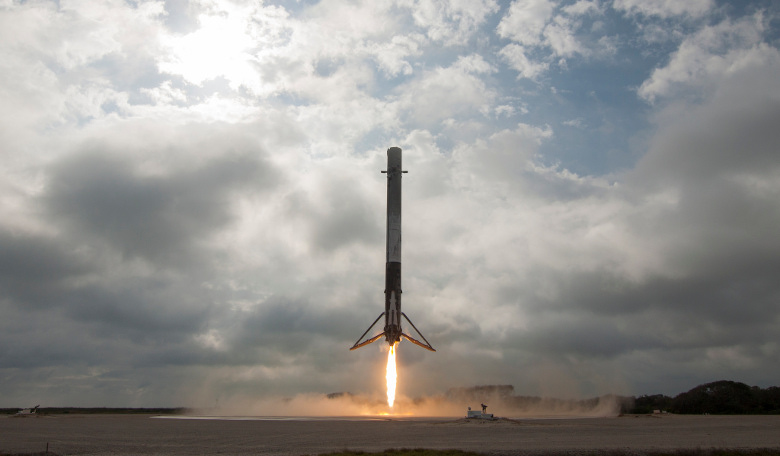With a successful static fire test of its Falcon 9 rocket completed yesterday, SpaceX will finally achieve what it set out to do over five years ago and it will reuse one of its rockets that has already been launched last year to send cargo to the International Space Station last year.
The company’s philosophy of keeping costs of space flight down by reusing its rockets, will finally be realised – to some degree – on Friday, as the launch, which was initially planned for tomorrow (Thursday 30th March), is set to deliver a SES 10 satellite into a geostationary orbit to provide satellite coverage to areas of Latin America.
Scheduled to depart from pad 39A at NASA’s Kennedy Space Center in Florida, the rocket was due to launch tomorrow, but following the test the company tweeted, “there was a tiny glitch in the motion of an upper stage engine actuator. Probably not a flight risk, but still worth investigating."
As such, the launch schedule has now been put back to a two hour window on Friday 31st March starting around 5.39pm EDT.
The vision of SpaceX founder Elon Musk is to reuse rockets just like airplanes. At present although the cost of a new airliner is about the same as a Falcon 9 rocket, a commercial airliner can be used for tens of thousands of flights over its lifetime, whereas a traditional space-faring rocket is used just the once.
Although the launch on Friday marks a milestone in achieving this vision, only part of the Falcon 9 is being reused on this upcoming mission. It is the first stage I.e. the 14-story-tall main body of the Falcon 9 of the rocket that contains the primary engines and most of the fuel that is being reused.
It is this first stage which makes a controlled landing back on Earth and as parachutes and wings are not required to help the rocket return and as the same system used to control the landing is the same used for the launch, costs can be kept down.
Martin Halliwell, chief technology officer for SES, a satellite operator based out of Luxembourg, also has a vested interest in reusable rocket technology.
“Having been the first commercial satellite operator to launch with SpaceX back in 2013, we are excited to once again be the first customer to launch on SpaceX's first ever mission using a flight-proven rocket,” said Halliwell, in a recent statement. “We believe reusable rockets will open up a new era of spaceflight, and make access to space more efficient in terms of cost and manifest management.”











